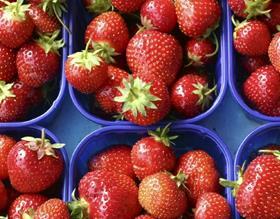
Strawberry tissue culture propagation has been gaining traction in the Philippines for the last few years, with the researchers behind it increasing planting material available to the country’s strawberry industry five-fold over traditional propagation methods.
The researchers from Benguet State University (BSU) have been selling strawberry plant materials to growers since 2007, primarily using the Sweet Charlie variety that makes up that majority of production in the Philippines.
The researchers have also increased the yield and berry size of the strawberry plants propagated using the tissue culture techniques, reported Malaya Business Insight.
The number of large 30g berries has been increased by 30 per cent, compared with traditional planting materials that yielded 90 per cent small berries around 5g.
As a result, per hectare production has been increased to 20 tonnes – lower than the 50t per hectare yielded in temperate countries, the report said, but 38 per cent higher than traditional plantings in the Philippines yielding 14 tonnes.
Tissue culture propagation methods also decrease disease problems, the researchers said, and have the potential to increase the areas strawberries can be produced in the Philippines.
The majority of the country’s production comes from 77ha of planting in La Trinidad.
“With the right climatic conditions, tissue culture of strawberries can potentially increase the farms planted to strawberries nationwide,” Dr Julia A Solimen, BSU Vice President for Research and Extension, told Business Insight.
BSU’s plant material costs local growers P50 (US$1.09) per tissue culture mother plant and P3 (US$0.06) per runner, compared to P25 (US$0.54) per imported runner.
The Philippine strawberry industry currently requires 4.62m pieces of planting material a year, the Business Insight report said.



